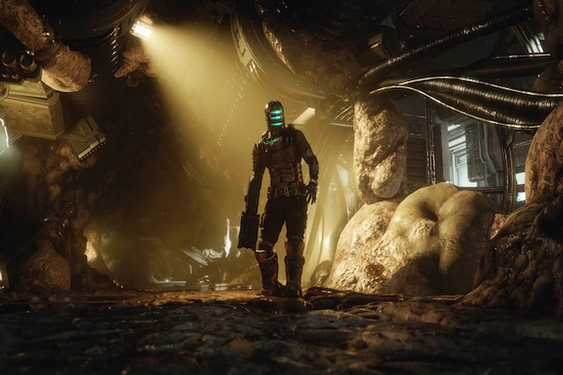You can pick locks. You can slide a little camera under a closed door and take a peek. You can see in the dark with night-vision goggles.
Two of your most lethal weapons are a shadow and an alluring whistle from your lips. And the games can be so, so quiet, yet exhilarating, because you don’t know what’s coming next.
For me, no other stealth series out there captures the cloistered essence of spy work like "Splinter Cell."
In the just-released "Chaos Theory," the third edition from this series by Ubisoft, I am once again sucked in. From the offline story mode that you can play by yourself or cooperatively with a friend, to the unique multiplayer challenges on Xbox Live, this title offers a gaming experience that is very large in scope and ingenuity.
I’ll reserve a four-star rating for the next time this series takes big leaps. In this latest edition, there’s nothing so new that you’ll stop and say, "Whoa." But "Chaos Theory" is true to the things that make "Splinter Cell" games so good: dramatic lighting, a good story, an emotive musical score, stellar graphics and spy toys, spy toys, spy toys.
In story mode, Sam Fisher, the American spy with the dark sense of humor, sets off to help our allies in Japan amid rising tensions from China and North Korea. The latter two are hacked off at Japan’s beefing up of its information defense systems, which is a violation of international law.
As the field operative for a team whose other members communicate with him remotely, Fisher discovers the roots of a much bigger scheme that could shake the world far beyond Asia. He makes his discoveries inside enemy territory, where he must gather critical information while remaining invisible. The stage is classic espionage, with Fisher blessed by a U.S. government that will deny his existence if pressed.
This version of "Splinter Cell" offers more freedom than previous titles, which pushed you along a certain path. Here, you explore many ways to each level’s goal, by crawling through ventilation shafts, snaking through ship cargo holds and zipping along wires high off the ground.
Cooperating with a second player, either on the same machine or online through cyberspace, helps advance you through story mode. You can make human ladders, jump longer gaps, boost each other to higher ground and more. I have to tell you, though, that the tutorial alone almost wore me out, so I spent most of my time alone in story mode.
Online, "Chaos Theory" continues the last version’s distinctive spies-versus-mercenaries matches. Two players try to infiltrate and steal certain computer information; two players defend. Games sometimes last 20 minutes, and the plodding stalk-and-kill strategy is markedly different than most deathmatch shoot-’em-ups.
So even after three versions, the "Splinter Cell" series still seems fresh to me. To say I spy another pretty good game here sounds a little forced, but it’s true.
"Splinter Cell: Chaos Theory," $49.99, www.splintercell.com.
Format: Xbox (also for Windows, PlayStation 2 and GameCube).
© 2005, Detroit Free Press. Distributed by Knight Ridder/Tribune Information Services.




